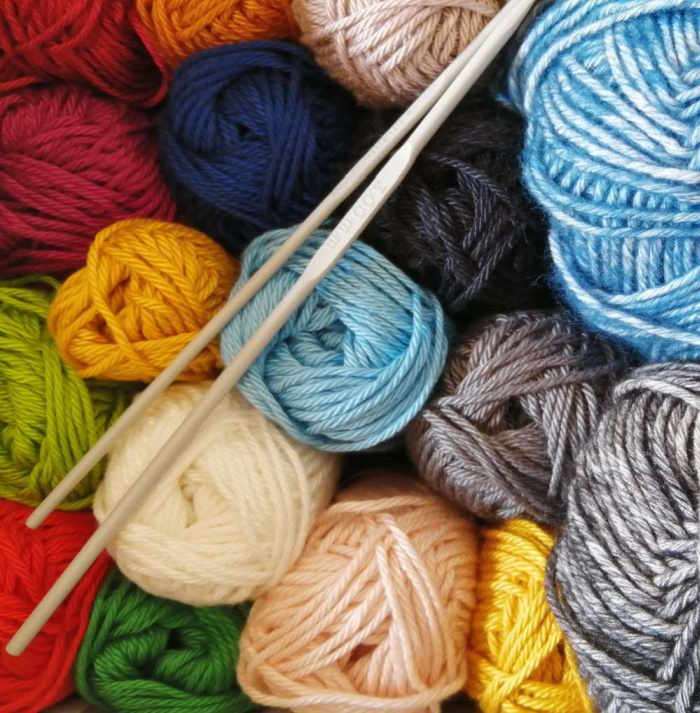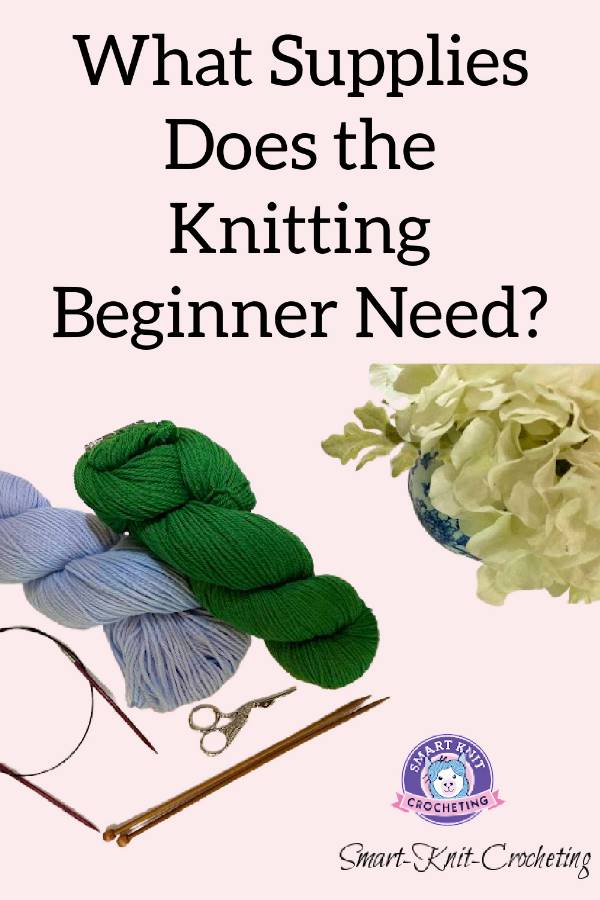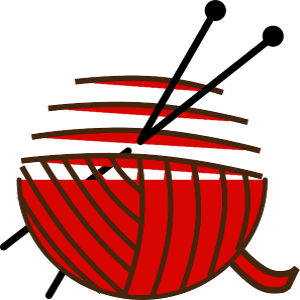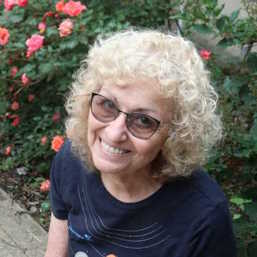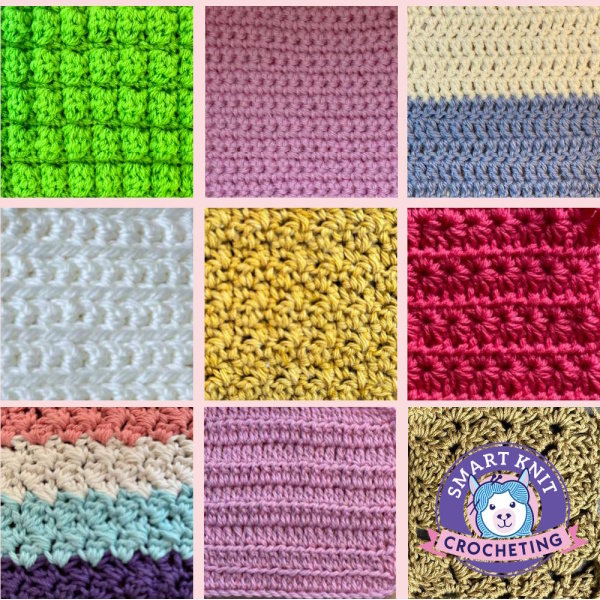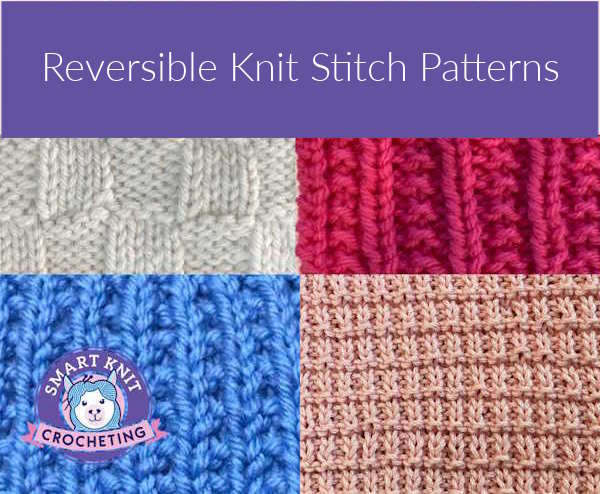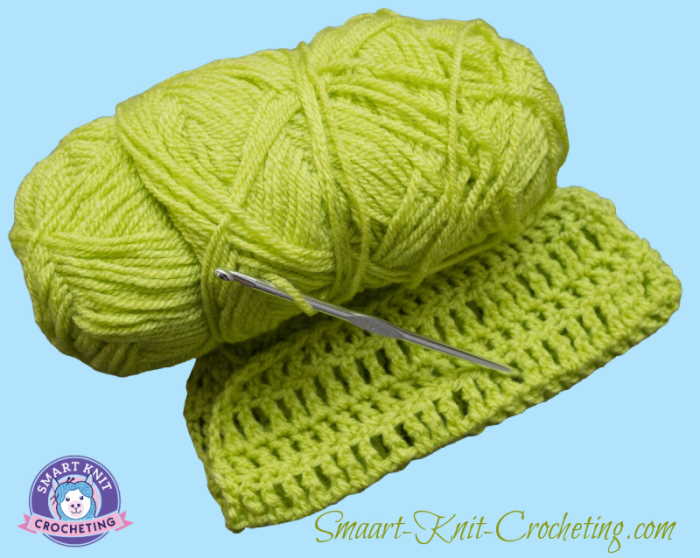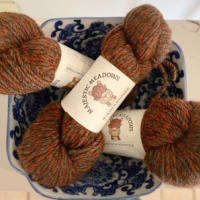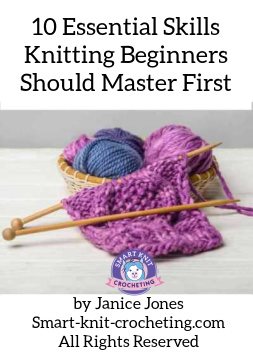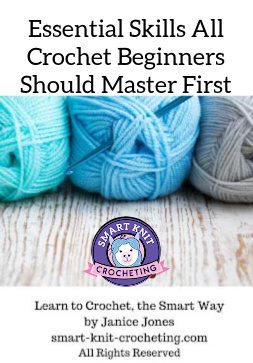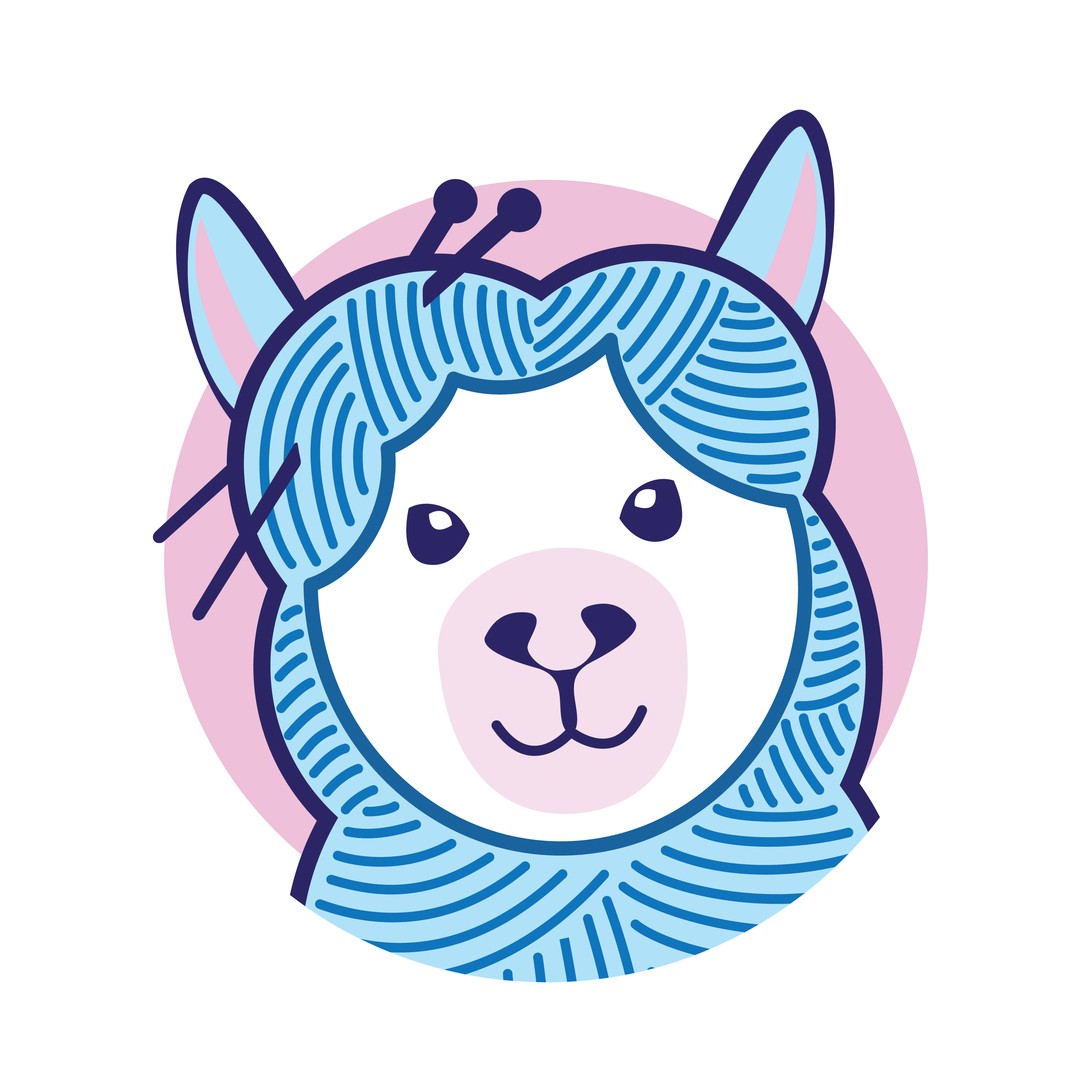- Home
- Must Have Supplies
Knitting Supplies: Detailed List of Products for the Beginner Knitter
Knitting Supplies |By Janice Jones, Certified Knitting Instructor (CYC)
Updated October 2025
Starting any new hobby requires a little investment in knitting supplies and accessories, but will a new knitting hobby require you to save for months to acquire the necessary supplies?
Luckily, the answer is NO. Knitting, at least initially, is a very affordable hobby that most people can comfortably afford.
What equipment is needed to start knitting? The short answer is a ball of yarn and a pair of knitting needles. But most people find that they acquire the knitting skills needed rapidly if they have a few more accessories in their toolbox. In this article, I'll guide you through building your first knitting kit box. If you prefer to begin knitting with a ready-made kit, I have you covered there, too.
Visit my page Knitting Kits for Beginners to learn more.
Here, I'll introduce you to the minimal supplies needed to create basic projects. At the end, I will show you some additional items that you can add to your wishlist as finances allow.
Some of the fundamental beginner projects can be created using inexpensive yarns, so you may find that you actually save money if you knit for yourself or your loved ones. You may even find that your budget for gifts is reduced when you make it yourself.
After checking out the table below, scroll down to see my personal favorites and why you will need them.
Essential Knitting Supplies for Beginners
Whether you’re learning from a friend, a YouTube video, or your first book, you’ll need a few key tools to begin your knitting journey. Below you’ll find four groups of supplies that grow with your experience — from absolute essentials to handy upgrades once you’re hooked on knitting.
Must-Have Tools to Get Started Knitting
These are the true essentials — the tools that let you make your very first stitches. With just a few simple items, you can cast on, knit, bind off, and proudly finish your first project.
| Category | Item | Purpose / Beginner Tip |
|---|---|---|
| Knitting Needles | Start with straight bamboo or wooden needles, US 8 (5 mm) | Lightweight and slightly grippy — perfect for learning tension control. |
| Yarn | Medium-weight (worsted) yarn in a light color | Shows stitches clearly and helps you see your progress as you knit. |
| Scissors | Small, sharp craft scissors | Trim yarn cleanly without fraying or snagging fibers. |
| Tapestry (Darning) Needle | Blunt needle with a large eye | Used for weaving in ends when finishing your project. |
| Measuring Tape | Flexible sewing or retractable type | Essential for checking gauge and finished size. |
Helpful Extras for Early Projects
Once you’ve practiced a bit, these handy accessories make your knitting smoother, keep your stitches organized, and reduce beginner mistakes. They’re inexpensive and well worth adding early on.
| Stitch Markers | Plastic or metal rings, clips, or loops | Mark pattern repeats or row beginnings; prevents counting errors. |
| Row Counter | Manual clicker or digital version | Keeps track of completed rows — especially useful for multi-row repeats. |
| Point Protectors | Rubber or silicone caps | Prevent stitches from slipping off your needles during storage. |
| Needle Gauge | Flat tool marked in US and mm sizes | Confirms needle size and measures gauge swatches accurately. |
| Project Bag or Pouch | Fabric drawstring or zippered case | Protects yarn from dust and keeps supplies organized on the go. |
Supplies to Add Once You’re Comfortable Knitting
After a few projects, you’ll be ready to expand your toolkit. These supplies open new possibilities — from knitting in the round to shaping, cabling, and finishing with polish.
| Circular Needles | Needles joined by a flexible cable | Ideal for large projects like blankets or knitting in the round. |
| Double-Pointed Needles (DPNs) | Set of four or five short needles | Used for small circular projects like socks or hat crowns. |
| Cable Needle | Short, curved needle | Holds stitches temporarily when making cable patterns. |
| Blocking Tools | Pins, mats, ruler, and spray bottle | Used to shape and smooth finished pieces for a professional look. |
| Stitch Holders | Safety-pin–style tool | Keeps live stitches secure when pausing part of your work. |
| Light or Magnifier | Clip-on or neck light | Reduces eye strain and makes evening knitting easier. |
Investment Tools and Storage Upgrades (When Budget Allows)
Once you know knitting is here to stay, you might enjoy investing in tools that make the process faster, tidier, and more enjoyable. These aren’t essential, but they add comfort and convenience that seasoned knitters swear by.
| Yarn Swift | Collapsible wooden or metal umbrella-style tool | Holds skeins securely while you wind them into balls. |
| Ball Winder | Clamp-on crank device | Turns skeins into neat, stackable “cakes” that feed yarn smoothly. |
| Yarn Bowl | Ceramic or wooden bowl with cut-out swirl | Prevents yarn from rolling around or tangling while you knit. |
| Interchangeable Needle Set | Case of needle tips and cables | Lets you customize lengths and sizes without buying multiple pairs. |
| Needle or Hook Organizer | Fabric or leather roll-up case | Keeps your collection tidy and prevents lost or damaged tools. |
| Storage Solutions | Baskets, bins, or stackable boxes | Great for sorting yarn by fiber or color and keeping projects accessible. |
| Yarn Scale | Digital kitchen or postal scale | Weighs leftover yarn so you can estimate yardage for future projects. |
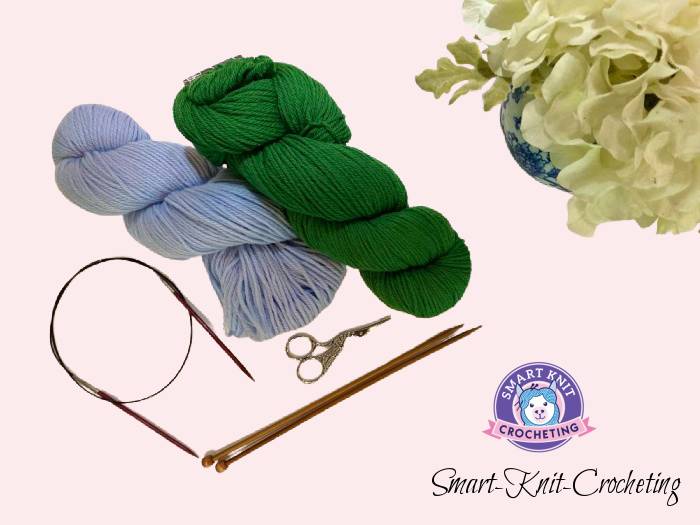 Basic knitting Supplies for the Beginning Knitter (Flower, optional)
Basic knitting Supplies for the Beginning Knitter (Flower, optional)Knitting Supplies for the Beginner
Here are the knitting supplies that I believe you will need to be a successful knitter. You may not use these tools immediately, but as you progress, you will find that they are indispensable and you'll be glad they are already in your knitting kit.
“Really, all you need to become a good knitter are wool, needles, hands, and slightly below-average intelligence. Of course, superior intelligence, such as yours and mine, is an advantage.”
– ELIZABETH ZIMMERMANN
Here are some quick links to the supplies discussed on this page. These are not all necessary for your first few projects, but as you get more "into" knitting, you'll find them to be very helpful. I have included some links below for those interested in pricing and availability. Since the two main items you will need to learn to knit are yarn and needles, I have devoted an entire page to each. Check out these resources or keep reading for a short introduction to what you need to know.
Yarn
Yarn is probably the very first item a potential knitter will discover. Whether you look online, in a large retail hobby store or in a small speciality yarn shop, you will soon learn that there's no limit to the types of yarn or wool you can acquire.
Just like any hobby enthusiasts who acquires a huge stash of supplies knitters tend to hoard yarn in all colors, weights, and compositions. But before you start spending all your hard earned money on yarn, you should know a little about what you are getting for your money.
Types of Fibers
There are two main types of fibers: Natural and Synthetic. But you may find that yarn also comes in a combination of both, called blends. Both have their place in knitting.
Natural Yarns are anything that is not human-made and include fibers made from either animals or plants. The plant fibers include cotton, bamboo, hemp, and linen. Animal fibers will be wool, alpaca, angora, cashmere, or silk.
- Alpaca (alpaca)
- Angora (rabbit)
- Cashmere (goat)
- Llama wool (Llama)
- Sheep (wool)
- Silk from the silkworm
You can read more about fibers here:
Difference between Wool and Alpaca Yarns
Synthetic yarns are often made from Acrylic, Nylon, and Polyester among others. These will be your most inexpensive yarns, likely easy to work with and launder. They are perfect for beginners.
Yarn Colors
Here is where it gets exciting. For beginners, I recommend a solid color to help you identify stitches and rows. Lighter colors are easier to see than dark colors, such as black or navy. Other than that, color is always the knitter’s choice. Don’t feel obligated to match the color marked on the pattern. You aren’t limited to that. Choose your own.
Yarn Labels
Everything you need to know about the yarn is on the label or ball band.
The label will include vital information such as the type of yarn (fiber content), weight of the yarn, the recommended knitting needle to use, given in English and Metric, the length and weight of the yarn shown in ounces and grams, laundering instructions, and where it was produced.
Learn more about reading the Yarn Ball Bands
Yarn Weights
This is likely more complicated than it needs to be. There are seven weight categories for yarn, from the thinnest (lightest yarn), which is labeled 1, to the heaviest or bulkiest, which is labeled 7. The information below can be accessed from the Craft Yarn Council. Look for the small symbol that resembles a ball of yarn with a number on it.
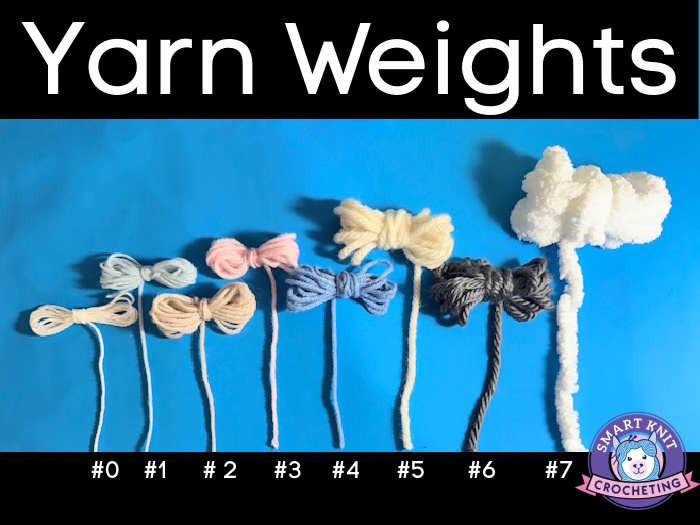
The thinner the yarn, the smaller the needle you will use. The label will generally indicate what size needles (knitting) or hook size (crocheting) are best used with a particular size yarn.
If you are a beginner, I recommend you begin with a number 4 or 5. These are the easiest weights to manage. If you prefer the bulky yarn, 6 or 7 weighed yarn is also relatively easy. Stay away from the superfine yarns (1 to 3) until you have a few projects under your belt.
My Yarn Recommendations for Beginners
I have written an entire article on yarn for beginning knitters, and I can recommend a couple of options for you to check out on Amazon.
Pick a worsted-weight yarn that is soft, easy to work with, and economical:
Lion Brand Yarn Lightweight 24/7 Cotton Yarn
Knit Picks Wool of the Andes 100% Wool
Knitting Needles
The most obvious tool that a knitter will need is a pair of knitting needles. Don’t get knitting and crocheting confused. Knitters use two needles to knit, whereas crocheters use one hook.
With many different types of knitting needles available on the market today, choosing the right one can be confusing. Before you purchase that first pair of needles, read through this section. You may find that you save quite a bit of money in the long run.
Four basic kinds of needles
There are four basic types of needles, with a wide variety even within these four categories. The four types of knitting needles are straight, circular, double-pointed, and cable needles.
Straight needles
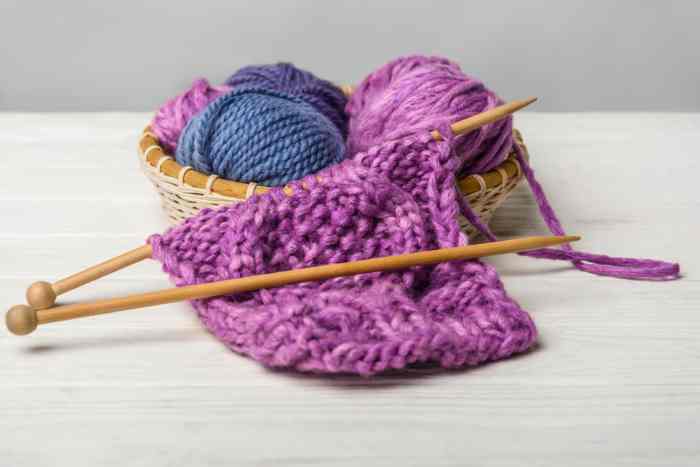
These needles are precisely what they say they are. They are straight with a point at one end and a knob at the other end. They usually come in different lengths. We use straight needles to work with fabric that is flat, such as scarves.
Circular Needles
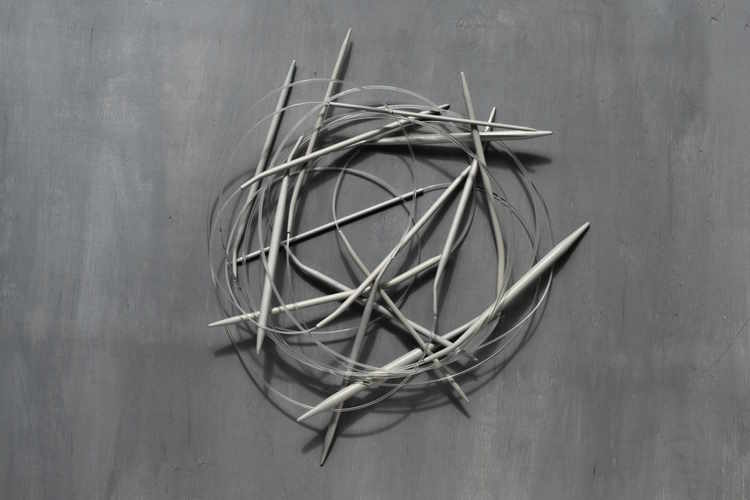
Circular needles contain two short needles with pointed ends connected with a plastic cord. These needles are ideal for large projects, such as blankets or working in the round on hats or seamless sweaters.
These needles vary by needle size and by cord length. You can purchase each one individually, or you can get a kit that includes different needle sizes and cords that you can interchange freely, called interchangeable needles.
Double-Point Needles
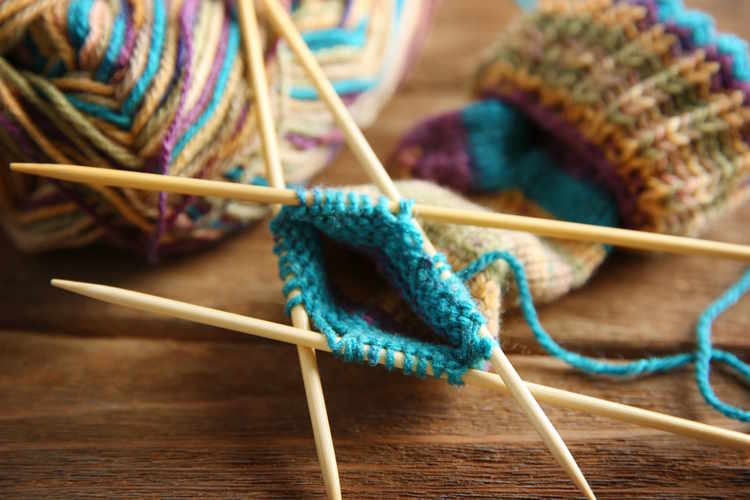
Double-point needles are shorter needles that have a point on either end. They are typically sold as a group of four or five needles. They also come in different sizes.
They are needed if you plan to make small projects such as mittens. You may start a project using circular needles and then switch to four double-pointed needles when the circumference gets too small to hold on the circular needle. An example of this would be a beanie.
Cable Needles
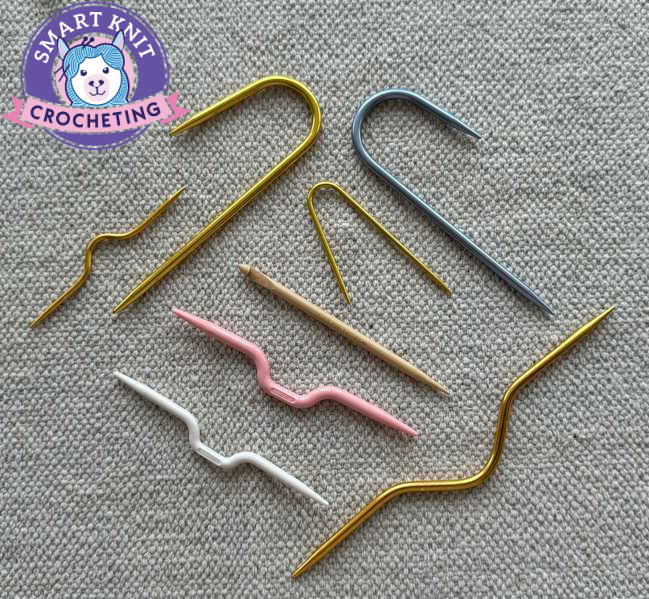
Cable needles are used to hold stitches when making cable knit patterns. You’ll find these come in acrylic/plastic, wood, and metals, and are shaped differently. Some knitting kits will come with these as an additional accessory.
Knitting Needles are Manufactured from Various Materials
The majority of needles available include bamboo or wooden, plastic/acrylic, or metal/aluminum. Each has its advantages and disadvantages.
Bamboo Needles
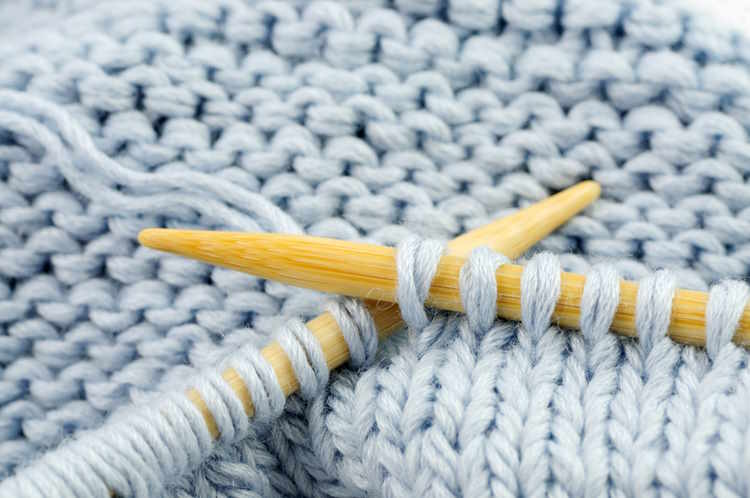
This type of needle is particularly popular among beginners, as it is gentle on the hands and joints.
They are very smooth, allowing stitches to move quickly on and off the tips of needles, but they also prevent stitches from sliding off the needle when not intended. They are perfect for anyone who is not a fast knitter. They are easy to obtain and inexpensive. Another advantage is that they don’t break easily.
As a natural resource, bamboo is environmentally friendly, so you can feel good about using it.
Metal/Aluminum Knitting Needles
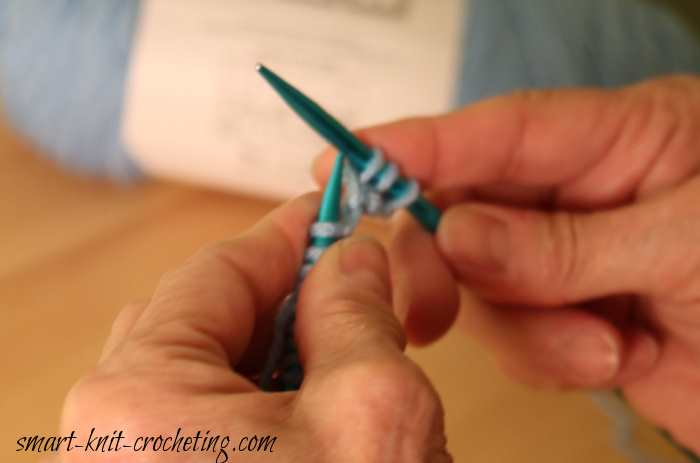
Most metal needles are made of aluminum these days, but you may also find them made with steel, stainless steel, brass, or even nickel. You can find them in all three types: Straight, Circular, and double-pointed. These are the traditional needles that our grandmothers used, and if you are lucky, you might even locate a vintage one.
They are by and large the most durable needle and very strong. You may find these needles last for a very long time. There is little likelihood of them breaking, but some of the cheaper ones will bend.
Their smooth, sleek surface makes knitting quickly very easy, but they can be slippery. Inexperienced knitters will find that losing a stitch is much easier when working on steel needles.
Plastic Knitting Needles
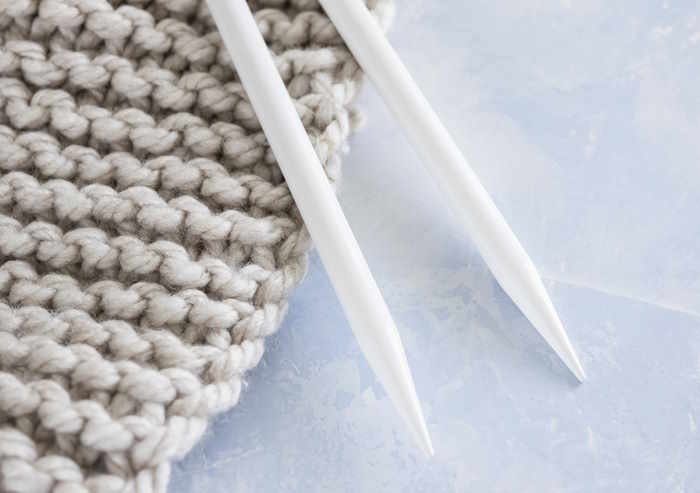
Plastic or Acrylic knitting needles also have advantages. They are very affordable.
They are neither slippery nor too sticky, which means your yarn will slip easily over the needles. This is a good thing for beginners or anyone learning to knit. These are the type of needles you will find most frequently in knitting kits for children. Less sticky than bamboo and less slippery than metal, the smooth surface of plastic lets your yarn glide smoothly. This feature is helpful for anyone learning to knit.
You’ll find plastic needles in straight, circular, or double-pointed designs. Plastic makes a good material for ergonomic knitting needles for arthritis.
Knitting Needle Sets
Straight Single Point Needles for Working Flat
You can purchase any needle individually or as part of a set. It may be more economical to buy a set of needles, but if you are unsure if knitting will become your next big passion, consider purchasing a pair of straight needles in a size US 7 (4.5 mm) or US 8 (5.0 mm)that can be used with worsted-weight yarn.
If you do want to purchase a set of needles, may I recommend a couple of my favorites:
Knit Picks Single Point Straight Needles
KnitPro Zing Deluxe Single Pointed Needles
Interchangeable circular needle kit
This kit may seem pricey at first, but I assure you that you will never need to buy another circular needle. Circular needles can also be used to work flat, so many teachers will recommend them over a set of straight needles.
I conducted an extensive review of Interchangeable Circular Needles, having purchased many sets, and my review is not sponsored. Remember, everyone has different preferences, but you can read what I discovered about Interchangeable Circular Needles.
Double Pointed Knitting Needles
Purchasing a set of double-pointed needles may not be necessary when starting, unless you're keen on knitting socks or mittens (which aren't beginner-friendly). However, I do use them on this site to work swatches, so they come in handy.
Here are a couple of sets that I own and can recommend.
Knit Picks Double Pointed Needles
I Love Takumi Bamboo Double Point Knitting Needles, but I have not been able to find them as a set.
More Must-Have and Nice to Have Knitting Supplies for the Beginner
Ruler or Tape Measure
Either a ruler or a soft tape measure will be needed fairly soon after you begin knitting. These are inexpensive and can be picked up online or in your local yarn store.
Scissors or Yarn Snips
This one is essential but very inexpensive. Choose a sharp pair of scissors or snips; it's your choice.
Yarn or Tapestry Needle
You may not be worried about weaving in yarn tails when just starting, but it is a job that we all must do. A tapestry needle has a large eye that allows you to thread yarn easily.
Row Counter
An inexpensive row counter lets you track the number of rows you have knitted, eliminating the need for manual counting.
Knitting Needle Point Protector
These are small plastic tips that fit over the needle tip, preventing stitches from falling off when you are not knitting. Especially useful when using double-pointed needles.
Crochet Hook
What!! Yes, a crochet hook can recover slipped stitches more easily than a knitting needle. Get a set or start with just a couple for picking up dropped stitches.'
Needle Gauge
This handy tool helps you discover the size of the needle you are using. They shouldn't be necessary if all needles were marked with their size, but alas, that is not the case. Unfortunately, there is no universal needle gauge for all needles. Each needle manufacturer will create their own. Here are a couple that I use with the needle sets I recommended above.
Project Bag
You might wonder why you need more than one project bag when you're just starting. I have quite a few full of yarn and supplies because I am always working on this site. Many knitters also have more than one project they are working on, called works in progress or WIPs. Nothing Fancy, just simple canvas bags, but you can always pin your project name on the outside so it's easy to see.
Knitting Supplies: Pin for Future Reference
Frequently Asked Questions
What do I absolutely need to start knitting?
What do I absolutely need to start knitting?
You can get started with some yarn, a pair of knitting needles, and scissors. All of the rest can wait until you learn a few of the basics and decide whether knitting is the right hobby for you.
Is it better to buy a knitting kit or individual supplies?
Is it better to buy a knitting kit or individual supplies?
If you like convenience, a starter kit is great! It includes coordinated tools and yarn, but only what you need to complete one project. However, if you prefer to select your own materials after conducting research, purchasing individual supplies offers more flexibility and often better quality for the price. It may even save you money.
What type of yarn should beginners use?
What type of yarn should beginners use?
Look for a smooth, medium-weight (worsted) CKC #4 yarn in a light color. White, cream, or pastel colors work very well for beginners. Avoid fuzzy or dark yarns at first because you’ll see your stitches more clearly and make fewer mistakes.
Are bamboo knitting needles good for beginners?
Are bamboo knitting needles good for beginners?
Yes. Bamboo or wooden needles have a gentle grip that keeps stitches from slipping off, making them ideal for new knitters still learning control and rhythm. They are also warm and comfortable in your hands, making them a perfect confidence booster.
How can I organize all my knitting supplies?
How can I organize all my knitting supplies?
Many beginners will start with the same plastic bag that their supplies came in. It's cheap but may not be the best choice. Start with a simple project bag or small basket. As your collection grows, consider adding labeled bins, yarn bowls, or a zippered organizer to keep everything organized and ready for your next project.
Conclusion: Start Simple and Build Over Time
Starting to knit doesn’t require a room full of tools. Begin with just the basics — a pair of needles, a soft skein of yarn, and a willingness to practice. As your confidence grows, you’ll naturally discover what helps you knit more comfortably and efficiently.
Think of these supplies as stepping stones: start with the essentials, add helpful tools when you’re ready, and treat yourself to the upgrades that make knitting even more enjoyable. Over time, you’ll create a personalized kit that fits your projects, your budget, and your style.
Most importantly, don’t wait until you have “everything” — the best way to learn knitting is to begin. The rhythm, texture, and satisfaction of turning yarn into something you've made yourself will keep you coming back again and again.
